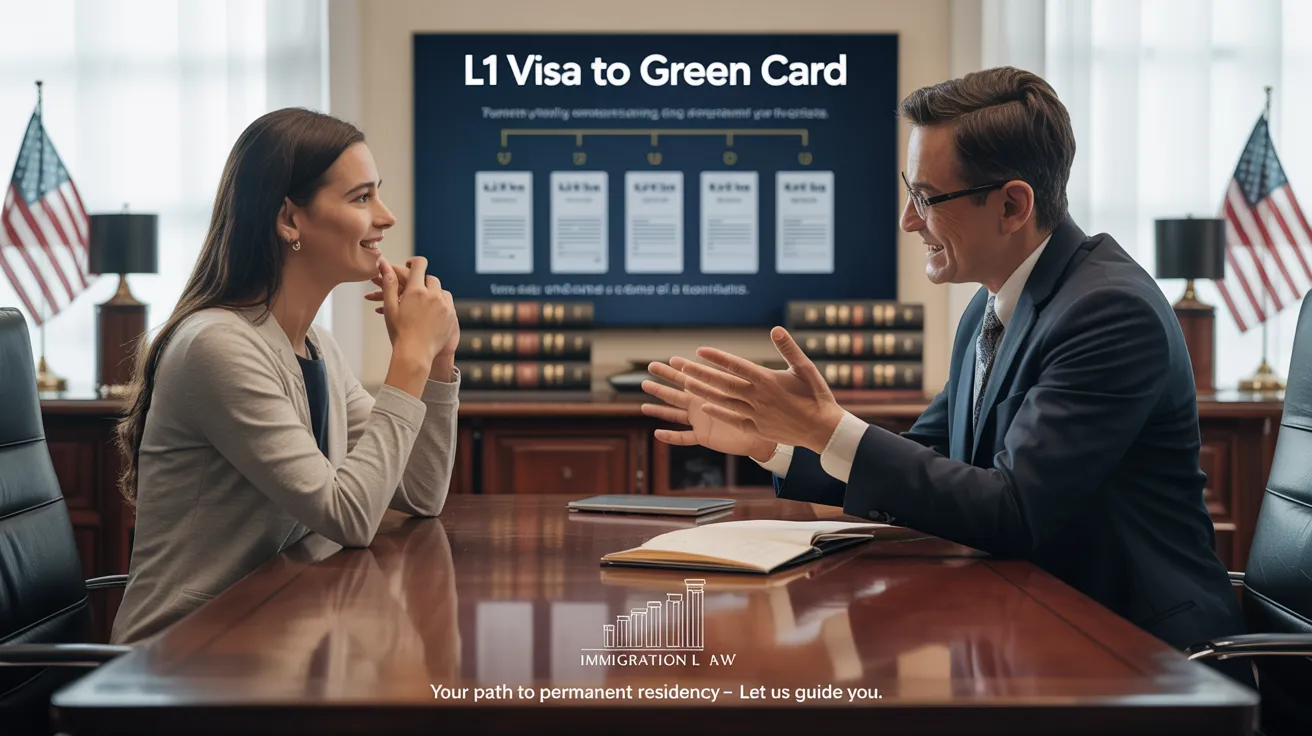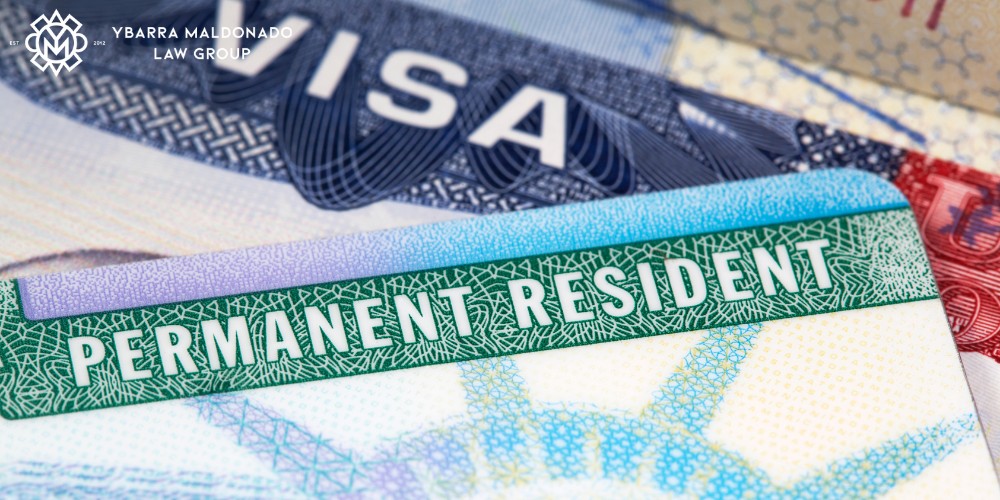Apply for L1 Visa
Every little thing You Required to Understand About the L1 Visa: Advantages, Demands, and Extra
The L1 Visa serves as a critical tool for international business seeking to move workers to the USA, helping with both functional effectiveness and the transfer of specialized expertise. With distinctive classifications for execs and specialized professionals, this visa provides various benefits, including possible pathways to permanent residency. Comprehending the eligibility demands and application process is vital for a successful change. As we examine the details of the L1 Visa, it comes to be clear that maneuvering its intricacies is critical for organizations aiming to take advantage of international talent successfully. What challenges might you experience in the process?
Summary of the L1 Visa

Kinds Of L1 Visas

Numerous types of L1 visas accommodate the varied requirements of multinational firms looking to move staff members to the USA. Both key groups of L1 visas are L1A and L1B, each designed for particular roles and obligations within an organization. L1 Visa Requirements.The L1A visa is intended for supervisors and executives. This group allows business to transfer individuals that hold supervisory or executive positions, allowing them to manage operations in the united state. This visa is valid for an initial period of approximately three years, with the opportunity of extensions for an overall of up to seven years. The L1A visa is specifically helpful for business seeking to develop a solid management visibility in the united state market.On the other hand, the L1B visa is marked for employees with specialized knowledge. This includes individuals that have sophisticated competence in specific locations, such as exclusive technologies or distinct procedures within the business. The L1B visa is likewise legitimate for a first three-year duration, with expansions offered for as much as five years. This visa group is perfect for companies that call for workers with specialized abilities to enhance their operations and maintain a competitive side in the U.S.Both L1A and L1B visas enable twin intent, implying that visa owners can get irreversible residency while on the visa. Comprehending the differences in between these two groups is essential for businesses planning to browse the intricacies of worker transfers to the USA efficiently
Qualification Requirements
To qualify for an L1 visa, both the company and the staff member have to fulfill particular eligibility requirements set by U.S. migration authorities. The L1 visa is developed for intra-company transferees, enabling multinational companies to transfer staff members to their U.S. offices.First, the employer must be a certifying organization, which suggests it needs to have a parent firm, branch, subsidiary, or affiliate that is working both in the united state and in the international country. This partnership is important for showing that the worker is being transferred within the same company structure. The company has to also have been doing service for at the very least one year in both locations.Second, the staff member has to have been utilized by the international business for a minimum of one continuous year within the 3 years preceding the application. This work should be in a supervisory, executive, or specialized understanding ability. For L1A visas, which provide to supervisors and execs, the worker has to demonstrate that they will certainly continue to operate in a comparable capacity in the united state For L1B visas, intended for workers with specialized expertise, the specific must possess distinct proficiency that contributes substantially to the firm's operations.
Application Process
Maneuvering the application process for an L1 visa involves numerous important steps that have to be finished accurately to ensure an effective outcome. The primary step is to figure out the appropriate category of the L1 visa: L1A for managers and executives, or L1B for staff members with specialized knowledge. This distinction is considerable, as it influences the documentation required.Once the group is identified, the U.S. employer should file Kind I-129, Request for a Nonimmigrant Worker. This form must include comprehensive information concerning the business, the employee's duty, and the nature of the work to be carried out in the U.S. Accompanying paperwork commonly consists of evidence of the partnership in between the U.S. and foreign entities, evidence of the employee's qualifications, and info pertaining to the task offer.After submission, the U.S. Citizenship and Immigration Solutions (USCIS) will certainly assess the request. If authorized, the staff member will certainly be notified, and they can then make an application for the visa at an U.S. consular office or embassy in their home nation. This entails finishing Type DS-160, the Online Nonimmigrant copyright, and arranging an interview.During the interview, the applicant needs to offer various papers, consisting of the authorized Form I-129, proof of employment, and any kind of added supporting proof. Complying with the interview, if the visa is provided, the employee will certainly receive a visa stamp in their copyright, enabling them to enter the U.S. to function for the funding company. Proper preparation and extensive paperwork are vital to navigating this process effectively.
Advantages of the L1 Visa
Among the noteworthy benefits of the L1 visa is its ability to facilitate the transfer of vital employees from international workplaces to the United States. This visa is specifically valuable for multinational business looking for to maintain consistency in operations and management across boundaries. By permitting execs, supervisors, and specialized staff members to operate in the united state, companies can ensure that their most necessary ability is readily available to drive service objectives.Another significant advantage of the L1 visa is its fairly simple application process contrasted to other work visas. Organizations can petition for the L1 visa without the need for a labor qualification, which simplifies the employment of international employees. Furthermore, the visa can be provided for a first period of up to three years, with the possibility of extensions, promoting long-lasting assignments.The L1 visa additionally offers a path to irreversible residency. Workers on L1A visas (for managers and execs) can make an application for a copyright after one year, expediting their modification to irreversible condition. This attribute is an eye-catching reward for talented people seeking stability in the U.S. workforce.Additionally, L1 visa holders can bring their prompt family members to the U.S. under L2 standing, enabling spouses and youngsters to stay and research in the nation, improving the general charm of this visa category. Generally, the L1 visa works as a necessary tool for worldwide services, promoting cross-border partnership and talent movement.
Usual Obstacles
While the L1 visa supplies many advantages for international firms and their workers, it is not without its difficulties. One significant hurdle is the stringent documents and eligibility requirements enforced by the U.S. Citizenship and Migration Provider (USCIS) Business need to supply thorough evidence of the international worker's qualifications, the nature of business, and the certifying relationship in between the united state and international entities. This process can be taxing and may require legal proficiency to navigate successfully.Another challenge is the possibility for analysis throughout the application process. USCIS policemans may question the legitimacy of business procedures or the worker's role within the organization. This analysis can cause delays or also denials of the copyright, which can greatly influence the firm's operational strategies and the worker's occupation trajectory.Furthermore, the L1 visa is linked to the sponsoring employer, which suggests that task adjustments can make complex the visa condition. If an L1 visa owner wants to switch over companies, they must frequently pursue a various visa group, which can add complexity to their migration journey.Lastly, preserving compliance with L1 visa laws is essential. Employers must guarantee that their worker's duty lines up with the initial request which business continues to satisfy the qualification needs. Failure to do so can result in revocation of the visa, affecting both the staff member and the company. These challenges necessitate thorough preparation and recurring administration to guarantee an effective L1 visa experience.
Tips for Success
To efficiently navigate the L1 visa process, thorough prep work is vital. Start by thoroughly recognizing the particular needs for the L1 visa category you are using for, whether L1A for managers and executives or L1B for employees with specialized knowledge. Gather all needed paperwork early at the same time, including proof of your employment history, business framework, and the nature of business operations.Engage lawful counsel experienced in immigration legislation to lead you with the intricacies of the application. A lawyer can assist ensure that your application is full, exact, and compelling. They can likewise help in getting ready for possible ask for proof (RFEs) by proactively resolving areas that may elevate questions.Additionally, preserve clear communication with your company, who must supply vital assistance for your application. L1 Visa. Verify that they comprehend their obligations, including filing the needed applications and providing paperwork that validates your duty in contact us the organization.Prepare for the visa interview by practicing response to usual inquiries regarding your professional history and the nature of your employment. Demonstrating confidence and clarity can greatly impact the outcome of your application
Often Asked Inquiries
Can Household Members Accompany L1 Visa Owners?
Yes, family members can come with L1 visa owners. Partners and unmarried children under 21 years old are eligible for L2 visas, which permit them to live and research in the United States during the L1 owner's stay.
How Much Time Can L1 Visa Owners Remain in the U.S.?
L1 visa owners can at first remain in the united state for up to 3 years (L1 Visa). This period may be extended, allowing an optimum remain of 7 years for L1A visa holders and 5 years for L1B visa holders
Is the L1 Visa a Dual Intent Visa?

Can L1 Visa Holders Make An Application For a copyright?
Yes, L1 visa holders can obtain an environment-friendly card - L1 Visa Lawyer. The L1 visa sustains twin intent, allowing owners to seek permanent residency while maintaining their non-immigrant standing, helping with a smoother changeover to a permit
What Happens if an L1 copyright Is Denied?
If an L1 copyright is rejected, the applicant may receive a notification describing the reasons for rejection. L1 Visa Requirements. They can appeal the decision, reapply, or explore different visa alternatives depending upon their circumstances and qualifications
Final thought
In recap, the L1 Visa acts as a crucial tool for international firms seeking to transfer employees to the United States. Comprehending the distinctions in between L1A and L1B classifications, along with the eligibility requirements and application procedures, is essential for effective navigating of this non-immigrant category. The benefits used, including structured applications and pathways to permanent residency, additionally enhance its allure. Addressing common obstacles efficiently can result in a more positive outcome in the copyright process.